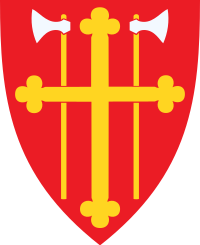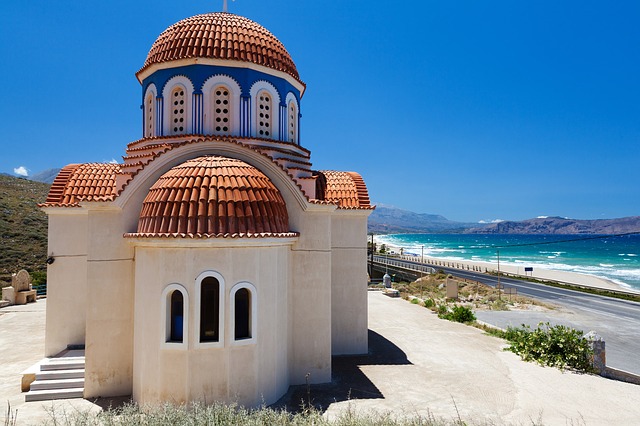Malta Facts For Kids
Malta is a Mediterranean island nation located near Italy. Throughout history, the islands were occupied by many different empires. Temples, fortresses, and other historic sites still stand today.
Thanks to these historic and cultural attractions, plus the sun and sea, Malta is a popular tourist destination.
Quick Facts
Capital: Valletta
Population: 437,000
Key Cities: Sliema, Valletta, Rabat, St. Paul’s Bay, Mosta
Official Language: Maltese, English
Major Religions: Roman Catholic
Geography
Bordering Countries: None
Size: 122 sq. miles
Lowest point: Mediterranean Sea at sea level
Highest point: Ta’Dmejrek at 830 ft.
Malta is an archipelago, or chain of islands, in the Mediterranean Sea. It’s just south of the island of Sicily, Italy.
Only Malta’s three largest islands are occupied by people: Malta, Gozo, and Comino. All three are low, rocky islands with steep cliffs along the coast.
Malta has no permanent natural lakes or rivers, but small rivers temporarily form during periods of heavy rainfall.
The Maltese islands have a Mediterranean climate, with hot, dry, and very sunny summers. Spring and fall are usually cooler, and winters are mild. Annual rainfall is low and mostly occurs in the winter.
Malta is almost treeless, with very little vegetation and plants. Common animals include weasels, hedgehogs, bats, white rabbits, and mice.
There are also many types of tortoises and turtles, butterflies, and lizards. The surrounding waters are home to species of Mediterranean fish, as well as porpoises and seals.
History
People first lived in Malta around 5900 BC. Around 3850 BC, the islands were populated by a civilization that built the Megalithic Temples. These temples still stand today as some of the oldest buildings in the world.
After that, the islands were ruled by Bronze Age warriors, the Phoenicians, the Romans, the Byzantines, and the Aghlabids.
The islands are also famous as the place where the biblical St. Paul shipwrecked in 60 A.D., bringing Christianity to Malta.
After the islands were sparsely populated (very few people) for several years, the Arabs conquered the islands in 870 A.D. In 1090, the Normans took control.
In 1530, Charles V gave Malta to the Sovereign Military Order of St. John of Jerusalem. They became known as the Knights of Malta and built towns, forts, and churches.
Famous European artists were hired by the Knights to decorate the churches and palaces of Malta. It became a golden age of culture on the islands.
In 1798, Napoleon Bonaparte and the French took control of Malta. The Maltese requested help from the British, and the French armies were expelled in 1800.
Malta then became part of the British Empire in 1814. It was an important military and naval base during World War I and World War II.

In 1964, Malta became an independent nation, joining the European Union in 2004. Malta’s government is a parliamentary republic with a president, prime minister, Cabinet, and Parliamentary Secretaries.
Economy
Malta’s major industries are tourism, electronics, pharmaceuticals, shipbuilding and repair, construction, and textiles.
Main agricultural products include potatoes, grapes, cauliflower, wheat, barley, tomatoes, citrus, green peppers, pork, milk, poultry, and eggs.
Malta’s economy ranks 15th in Europe and among the top 35 in the world. However, the country does have high tax rates and high levels of government spending and corruption. It’s also very dependent on other European nations.
Unemployment is among the lowest in the European Union, at around 4%. Malta’s currency is the Euro.

Culture
Maltese and English are the official languages in Malta, but French and Italian are also spoken. Because Malta is so close to Italy, about 66% of the population can speak Italian.
Malta is one of the most Catholic countries in the world. About 98% of the population identifies as Roman Catholic.
Meals in Malta sometimes begin with a small bowl of soup called minestra. Stuffed poultry and baked pasta dishes are popular, along with vegetables and fruits.
A popular seasonal dish is Lampuki pie, a pastry-covered fish casserole with spinach, cauliflower, chestnuts, and sultanas.
Stuffed octopus, squid, and cuttlefish are often served with tomato sauce. Rabbit stewed in wine is a special dish, and families traditionally eat lamb at Easter.
One of the country’s most popular celebrations and traditions is Carnival, which takes place before Lent. Children and adults dress in fancy costumes and join parades with many colorful Carnival floats.
Malta also participates in many religious activities and festivals. At the Feast of St. Grigor, a religious procession ends with a picnic in a small fishing village.
I-Imnarja celebrates the feasts of St. Peter and St. Paul. It’s a country harvest and folk festival with picnics, an agricultural show, and horse and donkey races.
The celebrations and festivals in Malta often end with fireworks. In the spring, the Malta Fireworks Festival is held in Valletta’s Grand Harbor.
Famous Maltese
Jon Cassar- producer
Emma Heming- actress
Andrei Claude- actor
Fun Facts
Malta’s smallest occupied island, Comino, has very few people and buildings. There’s only one hotel and no cars. However, it’s home to the beautiful and popular Blue Lagoon.
There are several sunken World War II ships along the coastline of Malta.
San Blas Bay, located on the northeast coast of Gozo, is a red sand beach.

Malta is home to 365 churches.
Valletta, the capital of Malta, is known as Europe’s first planned city.











